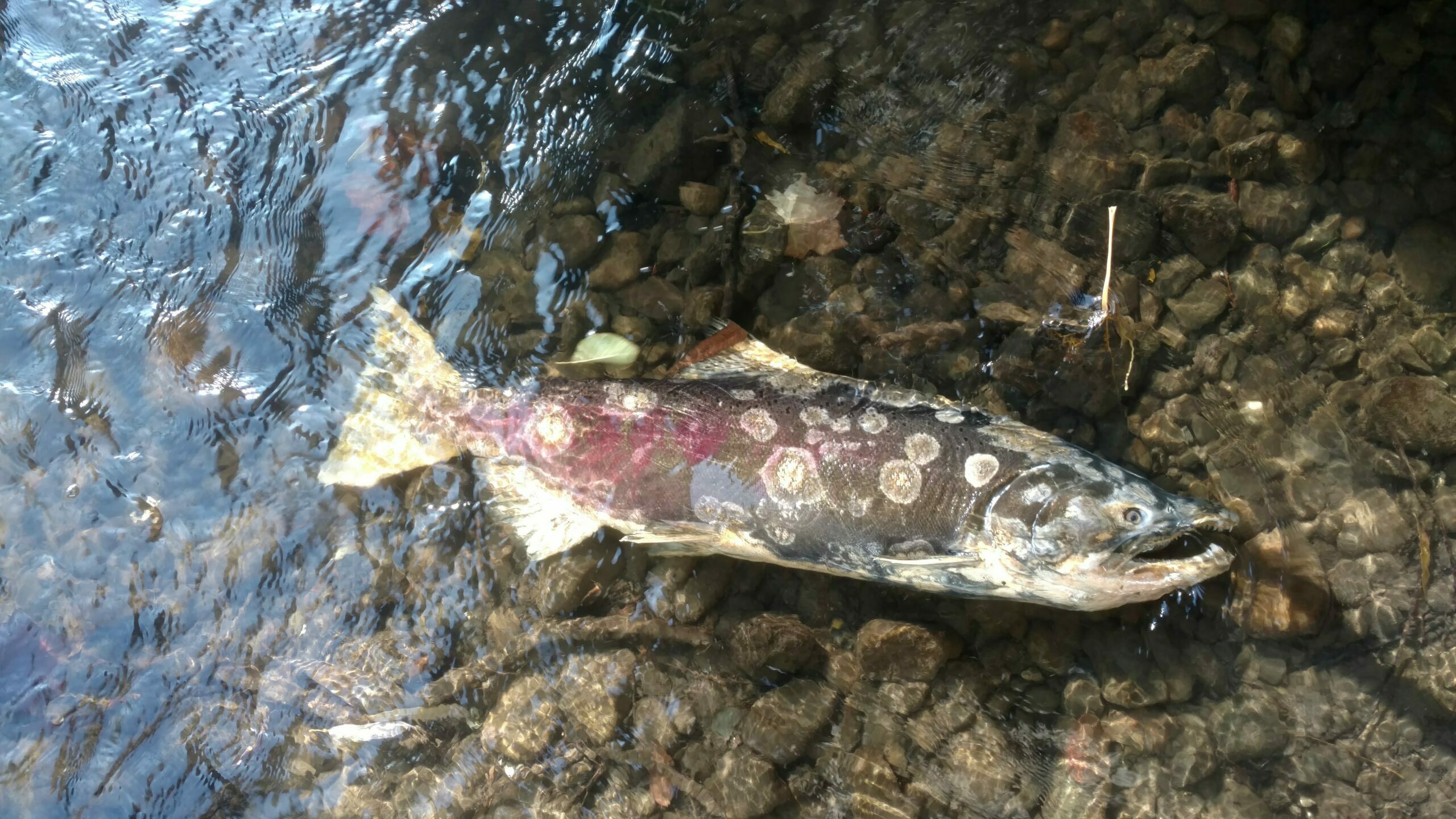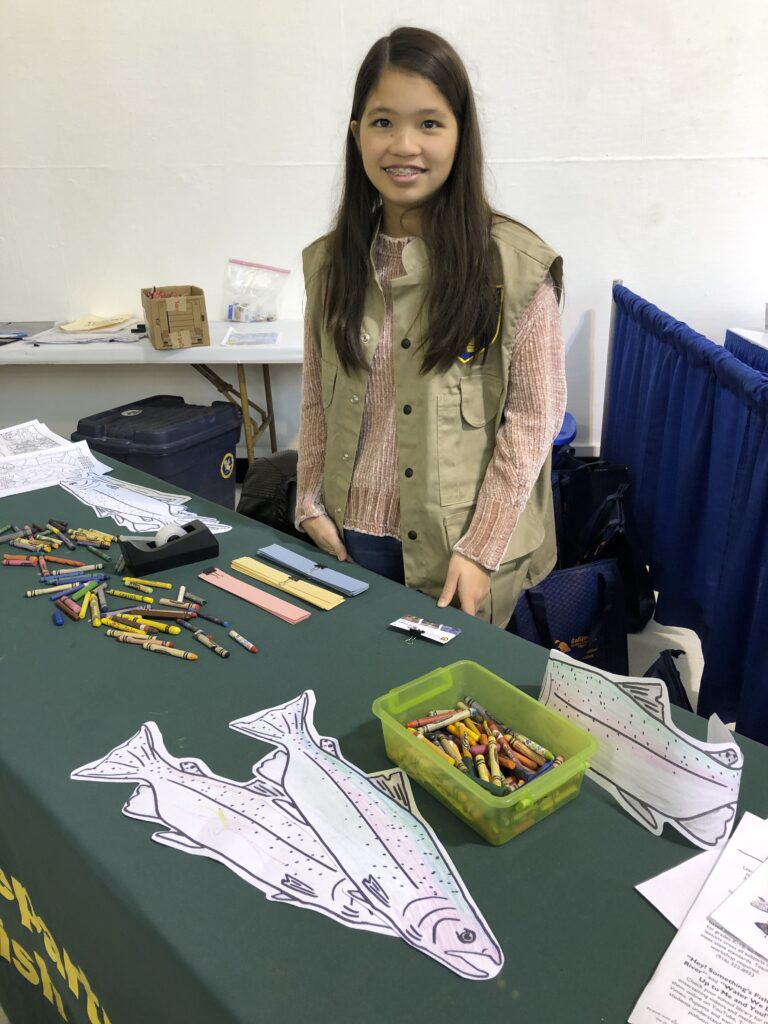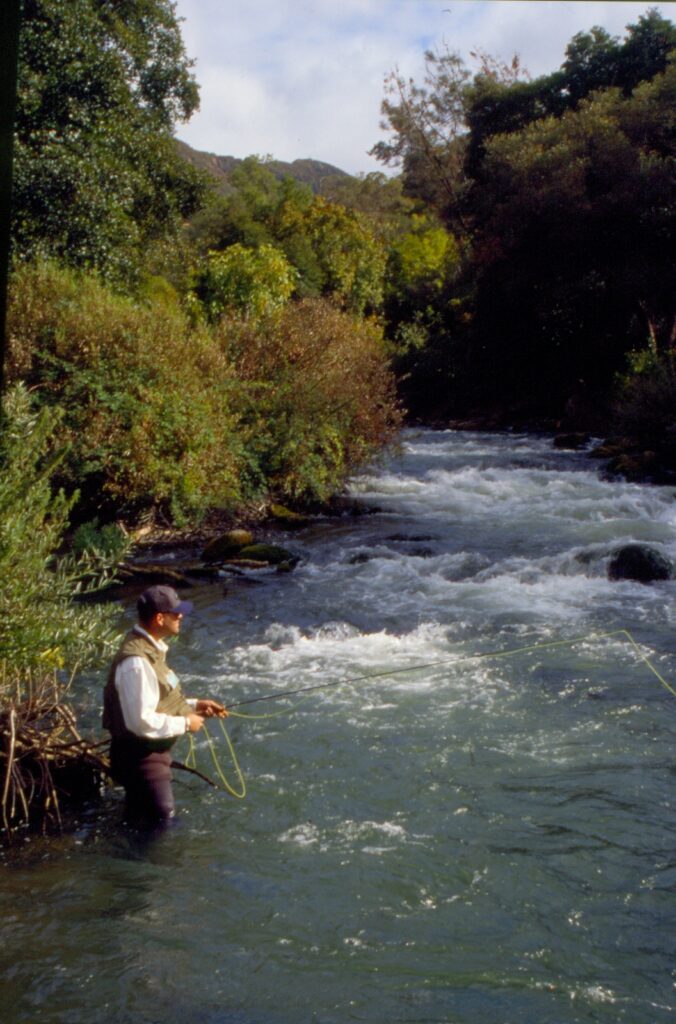
The days when salmon and steelhead teemed in California’s coastal watersheds faded away last century. Today, many populations of the fish are gone or dwindling, the river systems where they spawn drained by diversions or too warm for native fish to survive. Warming trends and drought are squeezing water resources tighter. Nearly all efforts to revive the state’s ailing salmonids have failed, often stalemated by political tensions, and it takes hatcheries and truck transport of juveniles to saltwater to maintain the feeble populations that remain.
California’s disappointing history of salmonid recovery programs has motivated a group of scientists from public water agencies and environmental conservation groups to step back, dream big, and take a new path forward. This group wants to abandon familiar heated dialogues and litigious relationships between those with differing values and try a new approach toward fish recovery based on collaboration, common interests and science.
“It’s an experiment in working together in a different way where the process is part of the product,” says Trout Unlimited’s California science director Rene Henery, who helped initiate the Reorienting to Recovery Project in 2020. Key to this process, he says, is having face-to-face conversations about the value and importance of salmon to different people — and having these conversations outside of the existing regulatory framework, where actions are typically made as a result of legal orders or requirements. “It’s a voluntary process where we talk about a concept of recovery that is not linked up with any regulatory language and is based on what the science tells us is possible,” he says.
The Reorienting project’s chief objectives include defining broad-sense salmon recovery. In this watershed-wide context, says Henery, “Recovery is not a word with a clear definition.”
Another project goal is to include and utilize input from interested parties that might have been excluded from past dialogues, like tribes and disadvantaged communities where salmon are — or were — an important source of nutrition and recreation, along with fishery representatives, regulatory agencies and the agriculture industry.
“This project creates a pathway for direct communication between these groups and decision-makers,” says Louise Conrad, former deputy executive officer for science at the Delta Stewardship Council, which awarded a $1.5 million grant to the project in 2021.
The project, which has been influenced by a similar effort in the Columbia River basin, began in earnest last summer with a series of remote workshops funded by $400,000 from the State Water Contractors, a nonprofit association of 27 water agencies that provides water for 27 million Californians and 750,000 acres of farmland. In this first phase, almost three dozen scientists focused on creating a new and detailed definition of broad-sense recovery for Central Valley salmon, with emphasis on both listed and unlisted runs. The participants, including Henery, Rachel Johnson of the National Oceanic and Atmospheric Administration (NOAA), and Brett Harvey of the California Department of Water Resources, agreed that recovery must go above and beyond abundance levels sufficient to prevent extinction.
Recovery of salmon, as a fishery conservation objective, has not been formally defined in California. Often, it is equated to preserving species and, in successful cases, delisting them as legally endangered species — what The Bay Institute program director Gary Bobker thinks is an inadequate definition.
“I don’t want just enough salmon so they don’t go extinct,” says Bobker, who has been closely involved in the Reorienting project. “I want salmon up the wazoo. I want salmon everywhere that it’s possible to restore them.”
The team modeled their recovery definition after the viable population criteria used by NOAA in salmonid recovery efforts: abundance, rate of reproduction, genetic diversity, and geographic distribution. Within this framework, they concluded that a recovered salmonid population should be self-sustaining with minimal human intervention and large enough to support substantial human harvest as well as ecosystem services in freshwater and marine environments. Such recovered populations must also, the group determined, be robust and diversified enough, genetically and spatially, to withstand significant environmental disruptions like droughts and disease.
Phase two of the project began in May and is being funded by the Delta Stewardship Council’s science program. The phase two goals are to connect with potential interested parties, assess existing salmon restoration projects, and quantify how far toward recovery these efforts go. In the third and final phase, the participants will identify and evaluate actions that seek to achieve salmon recovery.

Jennifer Pierre, general manager of the State Water Contractors, has participated in the Reorienting project since its inception during the 2020 Covid shutdown days. After having several initial conversations with Henery, Pierre says she was convinced that a process built of conversations, community outreach, and scientific assessments of project potential could help participants advance past the adversarial roadblocks that have long precluded coordination between water agencies and fishery interests, stifling progress in restoration and recovery.
“I learned a lot about how the environmental community views the public water agencies and how that perception changes how we interact with each other,” Pierre says. “Rather than being focused on a regulatory process, like a biological opinion, or a planning process like the Bay Delta Conservation Plan or the Voluntary Agreements, all of which have regulatory ties, we took time talking about salmon as a species and their different life-stage needs. We also spent a lot of time recognizing and honoring all of the ways in which salmon are important to different people in California.”
These dialogues, Pierre says, will set the stage for a polished plan and list of projects ready for implementation. She points out that the Voluntary Agreements — an ecosystem enhancement plan that seeks to avoid contentious river flow increases — will require about $2 billion in restoration work. “Wouldn’t it be nice if the restoration we’ll be spending this money on will be projects that we’ve vetted?” she says.
Alison Collins, a Bay-Delta senior resource adviser with the Metropolitan Water District of Southern California and one of the Reorienting project’s initiators, says this approach “gives ownership to participants so they can decide how they want to move forward.”

In the conventional regulatory landscapes, restoration projects are frequently designed one at a time, often amid disagreement between sidelined participants, and they may be implemented in a sporadic, incohesive fashion — checkered across the watershed — that some people feel makes them relatively ineffective. By contrast, the Reorienting to Recovery Project aims to produce a to-do list of dozens of restoration actions that all parties have endorsed, designed to complement one another and support different life stages of each salmon run regardless of endangered status.
“This will make projects faster to implement, easier to implement, and with more political will to implement them,” Henery says.
While the Reorienting project is novel in ways, it is up against some of the same political and environmental challenges that have stifled other programs intended to restore California’s salmon. Farmers vie, now as before, to irrigate their land with the same water that environmentalists say salmon need to carry out their life cycles. Chronic drought and warming trends have magnified these conflicts, and they will likely intensify with each passing year. “The lack of water is something that’s going to be really, really difficult to manage,” Conrad says.
Restoring California’s salmon is already required by law. The 1992 Central Valley Project Improvement Act, for example, calls on agencies to enhance flows and habitat in the Sacramento and San Joaquin rivers and double anadromous fish populations from levels seen from the 1960s through the 1980s. Enacting the law’s mandates has been legally and logistically difficult, though, and except for in a few exceptional years, the act’s doubling goal for anadromous fish restoration has eluded resource managers — even though, Bobker says, this vague numerical target is relatively unambitious. He sees room in the Central Valley’s watersheds for a lot more salmon than lawmakers dreamed possible 30 years ago, and the Reorienting project aims to shift the direction of approach so that recovery becomes more feasible.
“We’re trying to knit together a bunch of analytical tools to achieve goals above and beyond the CVPIA,” Bobker says. “If we provided the optimal environmental conditions, salmon numbers would octuple.”
The Reorienting project is heavy on optimism, built on faith in the landscape’s potential to support salmon and Californians’ will to bring watersheds back to life. The project scopes out maximum potential carrying capacity, and maximum restorable habitat for all life stages of the fish. This could involve actions like restoring floodplain habitat, reintroducing salmon to waters upstream of Shasta Dam, enhancing spawning areas with gravel deposits, improving functional flows of cold water from reservoirs, and changing hatchery and harvest management. It could even, Henery says, include “things as yet unimagined.” But there really is no knowing, he says, what the recovery effort will look like until all candidate projects are modeled in different combinations.
The outcome of these efforts, Henery hopes, could produce runs of salmon far greater “than the level of abundance required to delist an endangered species but probably less than the abundance we experienced historically.”
Henery also hopes the effort will create “a positive feedback loop where we work together and see something really positive come of our efforts.” He believes the project could help participants move beyond past disagreements over river and water management.
Bobker’s organization, The Bay Institute, has been involved in litigation against water and fishery agencies and water users — lawsuits aimed at improving ecological conditions in the Delta primarily by increasing freshwater flows through the estuary. He considers the Reorienting project an important complement to existing recovery efforts. “A bunch of us who are fighting in court with regulators over water management are coming together to ask, ‘Can we do this in a rational framework?’”he says.
California’s salmon and steelhead need improved habitat, upstream and downstream, for both spawning and rearing — but, Bobker says, long-term salmonid recovery efforts cannot stop there: “Habitat restoration can’t be a substitute for flows. These are aquatic habitats. They need water.”
Top image: Twenty pound salmon carcass found after spawning. Photo: South Bay Clean Creeks Coalition.
Related Estuary Stories
Other Links
CSAMP Workgroup on BDL (baydeltalive.com)